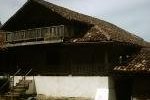
Outside the central valley, the most important area in the colony was present day western Guanacaste province that back in those days was known as the Partido de Nicoya. From the pre-Columbian times it had already a distinctive cultural input from the rest of the country, since it culturally belonged to the Mesoamerican region, having contact with Maya and Aztec cultures, but with particular features. When Spanish explorer Gil González Dávila reached the capital of Nicoya chiefdom (or cacicazgo) saw that the city included several pyramids and a temple, which have not survived to present day. It has not been demonstrated if the Spanish town was super imposed to the chorotega one and the church was located on the pyramid, or it was located in a nearby site called Sabana Grande, but the fact is that Nicoya parish was established by the Franciscan missionaries between 1522 and 1544, being the fist Spanish permanent town in all of present day Costa Rica. Since then to republican times, Nicoya was the capital of the partido de Nicoya, which decided to annex to Costa Rica in 1825.
About the building (located in http://sketchup.google.com/3dwarehouse/details?mid=e4c4fc5752ab6d497e38810f6923de53&hl=es&ct=lc), it is simple, two-storey high, does not have a tower but has instead a bulrush, and it is immaculately painted with white lime, an architectural style present in colonial churches of Nicaragua. The church is believed to be built in 1644, was damaged by strong earthquakes in 1822 and 1950, but has been repaired, it presently serves as a museum …
Keep reading 0 comments
Grand is the word to describe this palace. From the outside, one is overpowered by its sheer size and immensity, the interior however is very austere and your initial idea of a palace is of 'Baroque splendor' (like mine was), the Escorial may leave a lot to be desired
Keep reading 0 commentsEsteban Cervantes Jiménez
National archeological park of Guayabo de Turrialb
National archeological park of Guayabo de Turrialb (Removed from tentative list)
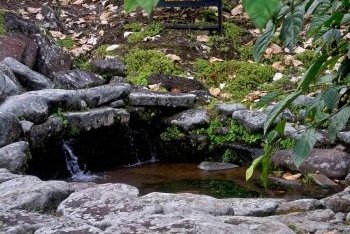
This is really worth a visit when you come to Costa Rica. It is almost unique not only because the indigenous communities in Costa Rica did not create sites not even far as grand as the ones created in northern Central America or Mexico, but also because in this country there has not been an adequate protection to archaeological remains, it happens the same as historic buildings, if a private owner finds some archaeological remain in the lot he is planning to build a supermarket, a hotel, a plantation, a road or anywhere else, quickly and silently bulldozes it before the archaeologists of the National Museum appear. Guayabo could have suffered the same destiny because it is located in a very fertile area in Turrialba highlands, eastern Cartago province, but late archaeologist Carlos Aguilar Piedra started back in the 60s regular excavations and campaigned to protect the site, already sacked and vandalized. As a site, it is small (4 ha), but the excavations have come just to the point that the government owns and it is believed that the site extends up to 15 or 20 ha.
The site culturally belongs to the intermediate zone, influenced primarily by the Chibchas and other cultures to the south, but having contact through Guanacaste to the Mesoamerican cultures.
The main features of Guayabo are the mounds that indicate through their size, height and location, the importance of the character that lived there on the mound. The houses were made of wood and organic …
Keep reading 0 comments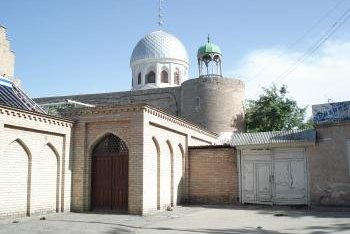
Visited in April, 2010. One of the former capital city of pre-Russian chanats (like Kchiva and Buchara). A little bit disappointing comparing to the other 2 as not many old building are preserved in the city center. Also during my stay the whole quarter of old buildings around khan's palace was demolished (intended fot new architecture ?). From practical point of view it was very difficult to find any accommodation there - all LP hotels were not in use - I found pretty nice new place just outside the center.
Keep reading 0 comments
While living in Germany from 1969 through 1977, my wife and I travelled extensively througout Europe. On one of our trips in the early 70's, we drove north from Madrid toward Santander, intending to follow the northern coastline back into France. Early one morning by chance I happened to notice a small sign referring to the Altamira caves. On a whim we pulled into the indicated parking lot and waited an hour or so for the elderly guide to show up for the morning's first tour.
No more than a dozen of us took the tour. I must say it was one of the most moving experiences of my life and certainly a highlight of our time living in Europe. I remember entering a relatively large anteroom near the front of the cave and then being led back into a much smaller chamber. (I only recall one chamber beyond the anteroom, though there probably were more.) A path had been dug out around the walls leaving a waist-high (or perhaps chest-high) plateau in the middle of the room that we had to squeeze around.
Although I had seen photographs in the past of cave drawings, I was completely unprepared for the impact the originals had upon me. What struck me most was how creatively the artist(s) exploited the contours of the wall. In a two-dimensional photograph you get no sense how the bulges in the rock surface were incorporated quite imaginatively and intricately into the bodies of the various animals.
…
Keep reading 0 comments
I have just returned from my second complete descent of the Rio Platano from the headwaters to the coast. This time i brought along a great cinematographer to capture on film what is really going on in this remote and beautiful place. We are going to produce some footage that shows the uncontrolled invasion of the reserve by settlers and cattle ranchers. Poaching of animals and clear cutting the forest is having a dramatic effect on the local population that is being threatened off their traditional lands.
Robert The Explorer
Keep reading 0 commentsBoj
Baroque Churches of the Philippines (Extension)
Baroque Churches of the Philippines (Extension) (On tentative list)
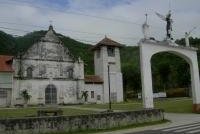
Five properties are nominated as extension to the existing four Baroque Churches of the Philippines. I was able to visit one under the tentative list ¨C the church complex of Boljoon, Cebu.
As stated on its nomination file, the Boljoon church complex prides itself for retaining original features ¨C the main church body, bell tower, cemetery, a school building, walls/gates and the convent which now houses an archeological museum. A few years back, skeletons and relics (Chinese plates and jewelry) were unearthed on the church grounds and this discovery lead experts to believe that the area could have been an ancient burial ground.
Local tourism bureau introduces Boljoon heritage walking tours. The tour features the church complex itself, a few heritage houses, a Gabaldon school, an old bridge and a watchtower ¨C personally, I think the last is yet another interesting theme: historians noted a certain Augustinian friar, Julian Bermejo who built a series of watchtowers for raids coming from the Moro south. These towers dot along the southern stretch of the province (about 90 kms) and need restoration and/or maintenance.
Keep reading 0 comments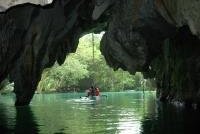
To avoid hassles, most travelers join the tour group to the Underground River. For 1500PHP /person (standard price), tour companies will secure permit to the natural park, provide lunch, provide transportation to and from Puerto Princesa City and Sabang, the motorboat ride from the Sabang port to the park/cave entrance and finally, the boat trip inside the cave. Independent travel to the park is still an option; but considering the difficulty to get to the place itself, joining the tour group isn't a bad choice.
Originally, I was afraid the place would turn out to be like Disneyland; but all in all, the site is properly managed. Sure, crowds swell at the entrance of the underground river but this is only because of the limited number of boatmen. Our tour guide also says the number of visitors per day is also being monitored within manageable level
The cave tour is a rewarding experience perhaps even for those who have joined cave explorations in the past. PPSNP did not install any colorful lighting inside and requests visitors to remain quiet. An eerie but unforgettable experience.
Keep reading 0 comments
Singapore accepted the World Heritage Convention only as recently as 2012, being one of the last sovereign countries to do so. Heritage of the tangible kind never has been much of a priority in Singapore. After independence in 1965, the focus has been on economical development at all cost. The recent interest in conserving heritage seems to be stimulated by NGOs such as the Singapore Heritage Society which spoke up about the remaking of Chinatown in 1998 and the demolition of the National Library building at Stamford Road in 2001.
Heritage however does play an important role in the "invented" Singaporean national identity: "Heritage binds Singapore and sells it. The development of Singapore into Asia's premier "Garden City" for example was initiated in 1963 by Lee Kuan Yew himself. In pursuing its first WHS, Singapore puts less emphasis on the tourism functions of World Heritage: the expected political and sociocultural returns appear more important.
The selection process for a possible WHS started already before 2012. In 2010, a study was commissioned by the Ministry of Information, Communications and the Arts to identify potential sites that could fulfill UNESCO's criteria as World Heritage Sites. Sites such as Haw Par Villa, Bukit Timah Nature Reserve and the former Ford Factory, were considered. Of the sites identified, the Singapore Botanic Gardens proved to be the strongest candidate. To date, it's the country's only TWHS and up for nomination in 2015 (the 50th anniversary of Singapore's independence).
The full nomination document …
Keep reading 0 comments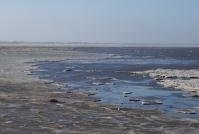
Olinda is a town founded during portuguese colonization in northeastern Brazil. It lies only a few kilometers from the capital of the State of Pernambuco, Recife, and has many churches and buildings from the 17th and 18th centuries, all framed by the blue ocean that can be seen from its hilly cobblestone lanes. Olinda reaches its pinnacle during carnival, but all over the year is a charming place to visit.
Olinda was burnt down by the Dutch during their conquest in the 17th century, but has been entirely rebuilt after the Portuguese reconquest and not much has changed since then in its historical centre.
Recife, the neighbour city, has plenty of attractions and also an international airport that make it easier to visit both cities.
Keep reading 0 comments
15 have years passed since the war has come to an end, but Bosnia-Hertzegovina is still a divided country. Though very small, traveling from one end to the other one can feel the enormous difference in wealth, development and even mentality. For centuries the country was a kind of patchwork Serbs, Croats and Muslims, lived together in peace in one village. Now – after the war – most of them still cannot cross the border of his community – though borders within the country are now spiritual.
Jajce is a victim of this division. Could be an attraction on its own right, but –being on the wrong side of the spiritual and administrative border – does not really attract anybody. Could be a highlight of any tour to the region – not Mostar of course, but comparable to Pocitelj or any Croatian town, but being in the Republika Srpska the tourist industry is seemingly not aware of its existence.
For me it was undoubted, that I want to see Jajce, even if it is not attractive at all. The fortress of Jajce for a Hungarian who knows the history of his nation is a symbol of our (long gone) supremacy on the Balkans, and the place where the troops of our last great king, Matthias “the Righteous” defeated the Turks. For fifty years Hungarian viceroys governed what is now Bosnia from this citadel.
To reach Jajce either from Croatia (e. g. Plitvice Lakes N P), or from Sarajevo (via Travnik) …
Keep reading 0 commentsSzucs Tamas
Memorials to the Heroes of the Great Patriotic War
Memorials to the Heroes of the Great Patriotic War (Nominated)
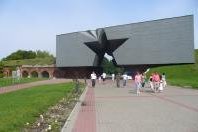
I have visited Brest on a sunny August day in 2007, after a trather disappointing "guided tour" to the Belovezhsjkaya Pushcha National park. (See the review there.)
The city of Brest is not a real eye candy - it was destroyed at least twice in the 20th century and reconstructed during the Soviet era. Grey concrete blocks stand on both sides of the unreasonably built four lane streets, were there is almost no traffic. The importance of the city is in its strategic location, during the Soviet times the bridge near Brest was the only border crossing between the Soviet Union and Poland - most of the commerce (legal and illegal) to and from the West went this corridor. Nice not, but it is a bustling commercial town with smugglers and whores. The only place of historical or touristic interest is the fort, now a patriotic historical monument nicely placed in a charming park.
The importance of the fortress comes from its role in the first ansd the second world war. Originally it was the largest 19th century fortress of Russian Empire, one of the western Russian fortresses. The final works were carried out in 1914, the first year of World War I resulting in a fortified area 30 km in circumference. The huge it was, it could not withstand the Blitz. During World War I the fortress was captured by the German army in August, 1915, after the Russian army abandoned it during its general withdrawal from Poland that …
Keep reading 0 comments
Belovezhskaya Pushcha was the greatest disappointment ever as a WH site. We have visited Belorussia as a part of a Baltic trip in August 2007, the first stop was Brest, the ideal jump off point to visit the national park. But the problems begun much earlier. Normally every trip begins with scrutinizing all the possible on-line (and some off-line) resources on the designated topic. Obviously the quality and quantity of resources vary. A WH site in Europe can have an elaborate website with all the necessary information , and there are a lot of reviews on different touristic and scientific sites that help the wishful traveler where to go and what to do. Belovezhskaya Pushcha was a black hole. I have found only two types of materials: detailed botanical essays on the flora (absolutely uninteresting for a group of historians), and enthusiastic reviews (mainly in Russian) on the historical importance of the regions. No practical information at all about the opening hours, the visiting opportunities, the prices, what we can see and how can we get there. So we had to lean on our off-line guidebook – a Lonely Planet Russia and Belarus. Unfortunately I was unsuspecting when I read that the writer put the entire country “off the beaten track”, and 80% of the Belarus chapter is about the capital. About BP there ware cca 50 words, and an allegation (false by the way), that can only be visited with a guided tour from Brest. I called the local …
Keep reading 0 comments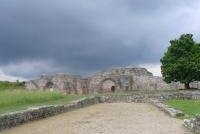
Gamzigrad Romuliana is a bit off the beaten track Wh site (as all of Serbia is), but really worth to see. It is not a great adventure to go there – but requires some time. Can be done as a day trip from Belgrade – providing you have your own vehicle, and you get up quite early. Most visitors will approach Gamzigrad from the Belgrade – Nis motorway –as we did it. There is a huge brown signboard before the exit, so you cannot miss it.
From trhe motorway it is less than 100 km, but be prepared, road conditions are quite various. After a couple of km of really good road we had to make a detour on curvy and humpy-bumpy country roads. In a sunny summer day it could have benne fun – driving through the Serbian villages. At night, in a thunderstorm it was a nightmare. A road seemed to be endless, but after almost two hours we reached Zajecar. This sleepy provincial town (the name means something like Rabbitville in Serbian), proved to be very friendly and surprisingly good looking. We found a cheap hotel (USD 30 for a double) and prepared ourselves for the next day in Ganzuigrad.
To reach Gamzigrad from Zajecar is easy, the road is well signposted, and in the sunshine the whole area looked much friendlier than last night. We first could see the site from the narrow tar road leading to the entrance through the fields. It is a fantastic …
Keep reading 0 comments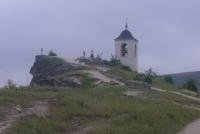
The Republic of Moldova is not a very touristy place and really has no extraordinary places to offer. (The most touristy part is the Cricova wine cellars - the so called underground city, that - for obvious reasons will not find its way to the WH.) The second most important tourist attraction is Old Orhei (Orheiul Vechi). Theoretically you can visit the site by public transport - but buses to Ivancea are rare, and from there you have to find another bus. We rented a car in Chisinau.
The northbound motorway to Orhei and Balti is well signposted. After a half an hour we reached the mountainous region of the Raut river gorge. We knew that the exit to Orhei Vechi must be somewhere here, but to find the actual place was not that easy. We missed the small signboard at least three times - but the local people were helpful and showed the way for the fourth time. (Fortunately almost everybody speaks or at least understands Russian.) Afrter finding the exit everything turned to be easy. Ivancea on the way to the site is a pretty Moldavian village, with all houses painted light blue. After Ivancea we arrived to Orhei Vechi itself. Before crossing the Raut river there is a small visitor center where you can buy the ticket, and leaflets about the site. (English and Russian also available) On the other side there is a small mound. Climbing up you encounter some children trying to sell artefacts or …
Keep reading 0 comments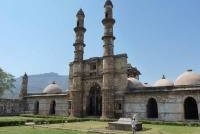
The count on this Web site under “most visited sites” for Champaner was a mere 2 visits before we added our 2 from this February 2011. That places Champaner as the least-visited Indian cultural site among our “community”. I wonder why? Even Els on her current epic RTW journey didn’t make the relatively short detour from Bhopal on an overnight train to Vadodara but went straight on to Delhi!
As its title indicates, the site consists of 2 main elements, albeit within a single boundary in the form of the “Champaner-Pavagadh Archaeological Park” extending to over 1300ha (c5sq miles). It contains remains of human occupation from the Stone Age but the main sights relate to Hindu religious and military remains on the hill of Pavagadh, which still operates as a Hindu/Jain pilgrimage destination, together with the remains of the city of Champaner situated below the hill. This was, for a brief period in the late 15th/early 16th centuries, the capital of a pre-Mughal Islamic kingdom in Gujarat. It is particularly important for the quality of the architecture – both in its own right and for its significance in the development of an Indo-Islamic style. The city became deserted after Humayun (he of the tomb in Delhi!!) defeated the Gujarat kingdom in 1536.
The Champaner part of the site is situated around 90 minutes by good road from Vadodara (“Baroda”). There is then a road part way up Pavagadh hill from where you can either walk to the top …
Keep reading 0 commentsSzucs Tamas
David Gareji Monasteries and Hermitage
David Gareji Monasteries and Hermitage (On tentative list)
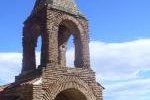
Davitgareja (or David Gareji ) monastery is a nice day trip from Tbilisi, if you have your own vehicle. 4WD is not a must, but can be useful, specially on the last couple of kilometers. Theoretically you can get close to the site by public transport, as there are villages on the road to the monastery, but buses are quite erratic there, and you have to get some kind of private transport for the last part of the way. Organized trips to this region are also available in Tbilisi, but, as everywhere they are highly overpriced.
The road is OK up to Sagarejo, where you can see a big signpost. There turn right. On the following cca 10 km, the road is getting worse and worse. The first half is tar, but after the villages there is only a dirt road in various condition. We rented a Pajero so it meant no difficulties for us, and we have seen Russian tourists with a Lada Samara - so an urban car can do it. The landscape is astonishing - the barren semidesert of Southern Goergia, dotted with cows and sheep, witnesses of the unchanged ways of Caucasian animal husbandry in the last five thousand years.
Davitgareja is the end of the road. It is a real hermitage, where almost no influence of the outside secular world disturbs the contemplation. There is no entrance fee, and one of the monks, who speaks Russian sold us a guidebook in Russian and English. We …
Keep reading 0 comments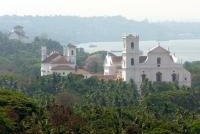
In Goa Velha we occasionally had to pinch ourselves to remember that we were in tropical India rather than Latin America – but there were large numbers of Indians in church and wearing saris to prove it!
Overall Goa Velha exceeded our expectations - but these were perhaps not that high to start with. We were more carrying out a duty visit based on “list counting” than from any urgent desire to see the site!! This now consists of a series of churches and convents laid out pleasantly over a wide area among landscaped gardens and tropical forests – a very relaxing place to visit with bright greens (trees and lawns), blues (sky and river) and whites (most churches!). There are no significant remains of any habitation from the early days of the old city although there were signs that richer Goans were currently building plush villas among the trees. The capital was officially moved to Panjim in 1843 but the churches had begun to suffer earlier in 1835 when Portugal initiated a series of actions against the religious orders. The ruined church of St Augustine dates from these activities
Goa’s capture by the Alphonso de Albuquerque from its Muslim ruler took place as early as 1510 – Cortes didn’t overcome the Aztecs until 1520 and Pizarro the Incas in 1532. But, as far as we could make out, the current churches in Goa date mainly from the Seventeenth century having taken a long time to establish or …
Keep reading 0 commentsSzucs Tamas
Sites of Great Moravia: Mikulcice - Kopcani
Sites of Great Moravia: Mikulcice - Kopcani (On tentative list)
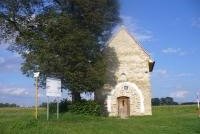
Considering the pivotal position of Great Moravia in the Slovak nation building I assumed that St marguerite chapel would be a very wll kept up site with student groups flocking to see the oldest staning building of their nation. The reality is far from it.
Kopcany is not far from the north-south motorway and only 64 kim from bratislava We approached from the other side, coming home (to Hungary) from the Czech Republic. It is quite easy to find the village, and the chapel is wll signposted. Coming from north we had to turen right. For quite a surprise the tar road ended u pin a signboard that was clearlx showing the way to a dirt road. As it was a sunny summer day, it was viable with a normal urban car. (But was not easyí at all.) The chapel itself is quite int the middle of onwhere. It is a little humble and seemingly very old structure, with all the characteristics of the cantral Europen Romanesque stile.
It is open only for occasional services, so the visitors can see the interion only through hte keyhole, or a gap ont he door. It seem to be quite uninteresting.
So if you are ont he motorway, on a sunny day, it worth a small detour, but do not try to go there in autumn or winter.
Keep reading 0 comments
my name is isidoro gonzales villegas, i lived in hospicio cavanas with my two sisters maria elena gonzales villegas and Lourdes Angelica Villegas. We lived there from 1969 until 1974. I wish I could say it was a positive experience but that was not the case. I was assigned to the asilo de ninos chicos.It is located on the side entrance of the capilla. My sisters were located on the West side of the orphanage. I was moved to Asilo de Ninos Grandes where I worked in the laundry located on the roof of the orphange where my sisters were housed. I had access to Mango tree and would shake it until some Mangos would fall for my sisters. I earned 15 pesos every other week. I asked for my wages in change so I could fill up a coffee can. I was allowed access to the Mercado de San Juan De dios. Where I would buy a big loaf of bread and carnita to make a big torta for all the other kids that were alone. If anyone reads this and was there at the same time period 1969 to 1974 I would like to communicate with you. Lets not forget the trips we took to Ajiji Chapala and Los Camachos!
that was relaxing and fun.my stay was not a negative xperience,it was a learning one. i now have 7 kids,4 grand kids.and been merried 27 yrs.
Rialto San Bernandino Ca.
Keep reading 0 comments